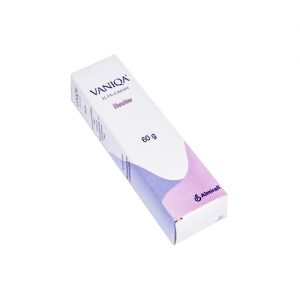Showing 1 products
Pagination
Can they be used on more intimate areas?
Certain hair removal creams are specifically formulated for use on the pubic area, considering the sensitivity of the skin in that region. It is important to use a depilatory cream marked for intimate or pubic areas and always follow the instructions provided. These special creams can usually be used on the buttocks as well, but they are not meant to be used between the buttocks or around the anus.
Should I do a patch test first?
Yes, it is recommended to perform a patch test before using a hair removal cream. Some individuals may have more sensitive skin that could react to the chemicals in the cream. To conduct a patch test, select a small area of skin that you wish to treat and apply a small amount of the cream, following the instructions for application and removal. Wait for 24 hours and check for any adverse reactions. If there are no negative effects, you can proceed to treat the entire area. Keep in mind that you may still experience mild discomfort, similar to razor burn, after hair removal. This discomfort should subside within an hour or so.
Tips on application?
Always follow the instructions provided with the hair removal cream and adhere to the recommended duration of application. Applying the cream for longer than instructed will not yield better results and can lead to skin irritation or burns. When applying a cream suitable for intimate use, splashing the area with cold water before application can help tighten the skin and make the process easier. Apply a sufficient layer of cream using smooth strokes and avoid rubbing it in. If all the hair is not removed in one application, wait at least 24 hours before trying again to prevent skin irritation.
Anything I shouldn't do when applying a hair removal cream?
In addition to avoiding leaving the product on for too long, it is important to refrain from rinsing with hot water or using soap before or after applying the hair removal cream. Hot water and soap can increase skin sensitivity. Instead, use cool or tepid water to rinse off the product. Do not apply the creams to broken or sunburnt skin, as well as to areas with spots, moles, or scars.
Does hair-removal cream hurt?
Hair removal cream can cause a slight stinging sensation, similar to using a chemical exfoliant. Ideally, it should not cause any discomfort. If you experience any discomfort, it indicates that the formula may not agree with your skin, and you should remove the cream immediately. It is crucial to follow the directions on the cream's package and avoid leaving it on for longer than instructed, as this can lead to burning, peeling, dryness, and irritation. Individuals with naturally sensitive skin should avoid using hair removal creams on more sensitive areas, such as the face and bikini line.
Does hair grow back thicker after hair-removal cream?
No, using a hair-removal cream does not cause hair to grow back thicker or faster. Any hair-removal technique that does not fully remove the hair from its root will leave the tip feeling slightly stubbly as it regrows. However, hair-removal creams do not alter the actual thickness, darkness, or speed of hair growth. These factors are determined by genetics and hormones.
By following the instructions and taking necessary precautions, hair removal creams can be an effective and convenient method for achieving smooth, hairless skin. However, if you have any concerns or specific questions about using hair removal creams, it is recommended to consult with a healthcare professional or dermatologist for personalized advice.
How Vaniqa works
The active ingredient in Vaniqa is eflornithine, which acts on the base of the hair follicle to reduce new hair growth by targeting an enzyme involved in hair growth. Vaniqa is not a depilatory (hair removal) cream, so you can continue with your usual hair removal methods while using Vaniqa if desired.
Where to use Vaniqa Cream
Vaniqa is designed for use on the face and should not be used on other areas of the body. Avoid contact with the eyes, inside of the nose, or mouth. If accidental contact occurs, rinse well with water.
Time it takes for Vaniqa cream to work
Vaniqa works by reducing new hair growth at the follicle, rather than dissolving existing hair like other hair removal creams. It may take 2-4 months before any noticeable difference is seen. If you do not see any results after 4 months of use, it is advisable to stop using Vaniqa and consult your doctor.
Side effects of Vaniqa Cream
Side effects with Vaniqa are uncommon and usually mild. Some possible side effects include acne, stinging of the skin, tingling, soreness, and redness. Discontinuation of treatment due to these side effects is rare. For complete information on correct usage and potential side effects, refer to the patient information leaflet.
Important information about Vaniqa
Excessive hair growth may be a result of underlying conditions. If you notice sudden excess hair, it is recommended to consult your GP. Vaniqa is not suitable for use during pregnancy or breastfeeding, and it should be avoided if you are trying to become pregnant.
Safety: Taking other medicines
As with any medication, Vaniqa can interact with other medicines. It is important to inform your healthcare provider about any prescription, over-the-counter medicines, and recreational drugs you are taking to ensure the safe use of Vaniqa.
Alternative treatments to Vaniqa cream
Alternative methods of hair removal include shaving, waxing, epilation, electrolysis, laser treatment, or bleaching. Weight loss can also reduce facial hair in obese women. For some women who have not yet reached menopause, the contraceptive pill may be effective in managing excess hair. If you are considering this option, discuss it with your doctor.




We’re here to help.
Our friendly team is available to help Monday to Friday 9:00am - 5:00pm.
If you need urgent assistance, do not use this service. Call 111, or in an emergency call 999.

